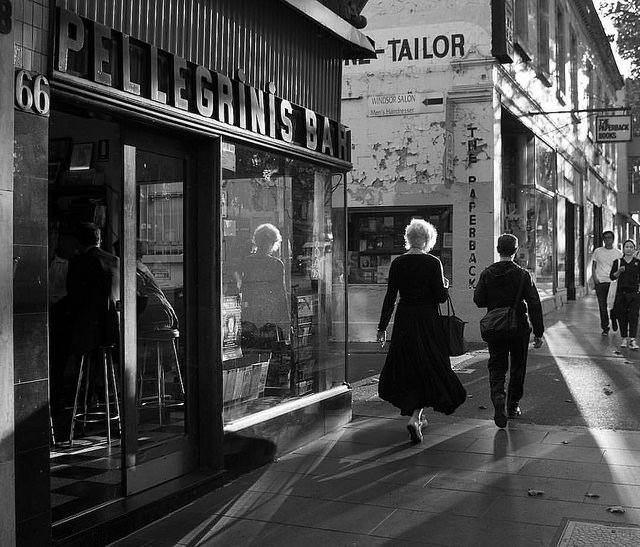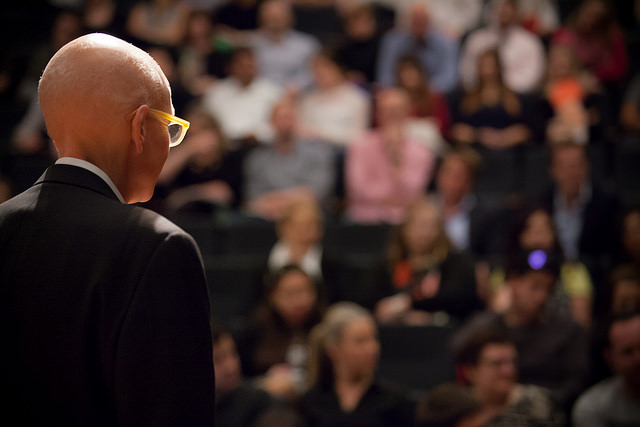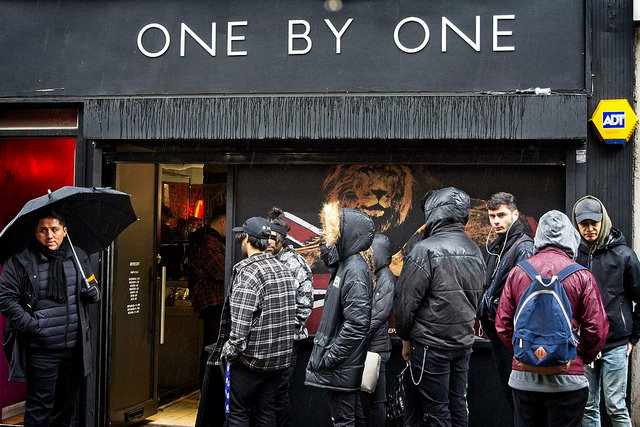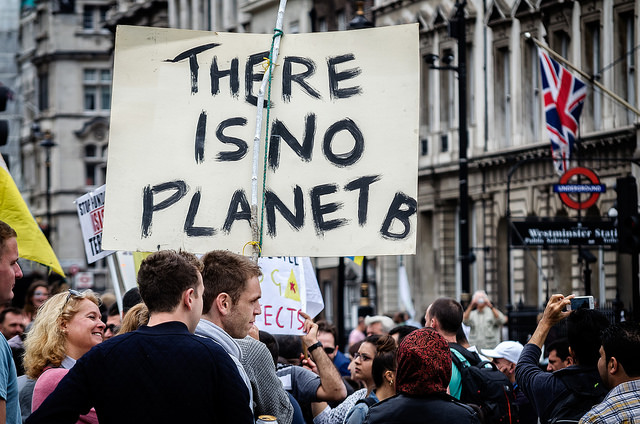Unlock the Magic in Your Story Now
Get the Free 20 questions to Ask Before Launching Your Idea workbook when you sign up for occasional updates.
Get the Free 20 questions to Ask Before Launching Your Idea workbook when you sign up for occasional updates.
How We Do Matters
filed in Storytelling, Strategy
 One of the owners of Melbourne’s most iconic café died tragically a week ago. Sisto Malaspina had been serving espresso to Melburnians at Pellegrini’s since 1974. Tributes poured in from across the community about the impact he and his café had on people and the city. The one that struck me was the story told by a man who arrived in Melbourne to start a new job, with little more than the clothes on his back. When he asked people where he should eat, they said, head to Pellegrini’s. They will feed you like family. Like family.
One of the owners of Melbourne’s most iconic café died tragically a week ago. Sisto Malaspina had been serving espresso to Melburnians at Pellegrini’s since 1974. Tributes poured in from across the community about the impact he and his café had on people and the city. The one that struck me was the story told by a man who arrived in Melbourne to start a new job, with little more than the clothes on his back. When he asked people where he should eat, they said, head to Pellegrini’s. They will feed you like family. Like family.
Making people feel like family was intentional, a choice Sisto and his team made every day.
A choice his business partner and his team will continue to make now he’s gone.
Image by David Brewster
Share this article
This IS Marketing
 As I boarded the long-haul flight, I kept my fingers crossed that I’d get some sleep before we landed. So it was a relief when my fellow passenger, Don, declared his intention to do the same. We agreed that we weren’t anti-social, just two pragmatists trying to come away from the journey in the best shape we could. But halfway through dinner, probably as we were flying over Singapore, my travelling companion seemed to change his mind. Don started opening up about the difficult meeting he was heading to as soon as we landed the next day. He and his business partners ran a successful engineering company, but they couldn’t agree on the best strategy for ensuring its sustainable growth. Don was worried about what would happen next. He sensed trouble ahead.
As I boarded the long-haul flight, I kept my fingers crossed that I’d get some sleep before we landed. So it was a relief when my fellow passenger, Don, declared his intention to do the same. We agreed that we weren’t anti-social, just two pragmatists trying to come away from the journey in the best shape we could. But halfway through dinner, probably as we were flying over Singapore, my travelling companion seemed to change his mind. Don started opening up about the difficult meeting he was heading to as soon as we landed the next day. He and his business partners ran a successful engineering company, but they couldn’t agree on the best strategy for ensuring its sustainable growth. Don was worried about what would happen next. He sensed trouble ahead.
After he realised he’d been talking about himself for quite some time, Don apologised and asked the question we, especially us marketers, love to hate. ‘So, what do you do?’ It’s always easier to answer this question if your job title is your job, even if the title doesn’t convey your contribution to your community and the world. As marketers, many of us have the added problem of almost feeling ashamed of the answer. When I told Don I worked ‘in marketing’ his posture shifted.
‘Oh, that’s all just smoke and mirrors,’ he said.
The irony, of course, is that we’re all ‘in marketing’. Don is too. Marketing isn’t only about selling. Marketing is about helping. It’s about having the courage to show up with vulnerability. It’s about telling stories that change people. It’s about helping them to make decisions they won’t later regret. Marketing done right is an act of generosity. It’s work that matters for people who care. But that’s not the marketing most people experience and not the kind of marketing many people practice. It’s up to us to do better. To do marketing we’re proud of. Because we can.
If you’re on a quest to do work that matters for people who care and if you want to be a proud marketer, then Seth Godin’s new book This Is Marketing is for you.
It’s impossible to quantify the impact Seth’s work has had on millions of people around the world. People like you and me. I wish I’d had a copy to Seth’s new book to give to Don on that flight. I know it would have helped him and his colleagues reach the place they wanted to go. I know it will help you too.
Share this article
The Right Customer
filed in Marketing, Storytelling, Strategy
 A lot has changed in the six months since I last walked through the Melbourne suburb of Albert Park. New cafes have opened. Others have closed their doors. Some established cafes have queues of people waiting for tables, while several, just a few hundred metres down the street, are empty.
A lot has changed in the six months since I last walked through the Melbourne suburb of Albert Park. New cafes have opened. Others have closed their doors. Some established cafes have queues of people waiting for tables, while several, just a few hundred metres down the street, are empty.
There’s no doubt that the best business ideas are a combination of the right product, launched at the right time. But even if a product or service ticks those two boxes, its success and longevity are still dependent on attracting and retaining the right customers.
We spend a lot of time thinking about and working on products and services, fixtures and fittings, design and marketing. We don’t spend enough time getting clear on who our ideal customer is, what they want from us today, and what will keep them coming back tomorrow. We can only begin to tell our story effectively when we understand the story of the person we’re trying to attract and delight. Who exactly is your right customer and why will he choose you?
Image by Garry Knight
Share this article
The Power Of Because
filed in Storytelling

Over several decades our traditional, mass marketing culture taught us that marketing and sales were about finding the angle. Marketing became about getting creative with the truth and being a master of spin. It doesn’t have to be this way. We can choose to do the kind of marketing we’re proud of. What if instead of trying to come up with an angle, we mastered truth-telling instead?
We can rediscover the truth about our value proposition by revisiting the reasons we originally showed up for these people at this time.
We made this because _______.
People need this because _______.
We do it this way because _______.
We want to appeal to this customer because _______.
This is the right thing to do because _______.
Our company exists because _______.
The truth is the most powerful sales and marketing strategy of all. We become better marketers by being honest with ourselves first and foremost.
Image by Garry Knight
Share this article
The Feeling Customer
filed in Marketing, Storytelling, Strategy

One of the mistakes we make when we’re building a business and communicating our value is to only create for the thinking customer and his rational mind. Messages that resonate deeply connect with people’s feelings. Beloved brands and successful businesses appeal to their customers’ hearts, not just their heads. Wants and needs. Dreams and requirements. Desires and demands. Apple resonated by using design. Starbucks did it with rituals. Airbnb leveraged belonging.
We don’t just persuade people to act. We move them to act.
How are you serving wants as well as needs?
Image by Garry Knight
Share this article
Three Things Your Audience Wants To Know
filed in Storytelling

When we’re trying to convince people to support our cause or buy our product we often double down on giving them information. Our false assumption is that if we can arm people with enough information to make a decision that they will be willing to act. But facts alone are not enough to persuade us to take action. Gifted communicators and powerful storytellers know that people need more than just convincing arguments and endless detail to help them decide.
The Three Things Your Audience Wants To Know
1. Can I trust the messenger?
2. Does the message make sense?
3. Do the message and the values of the messenger align with my values?
Persuasion is an art and a science. A compelling argument, communicated with emotion, by a source we trust and want to believe in.
Image by Garry Knight
Share this article
Adding Value By Subtraction
filed in Innovation, Strategy, Success

When we’re innovating a product or iterating a service, we tend to add value by introducing features and benefits. But more isn’t always better.
Sometimes improvements and progress are made by removing things that people wouldn’t miss.
What could you subtract or stop doing to improve your product or service?
Image by Garry Knight
Share this article
Missed
filed in Storytelling, Success
 If Jason suddenly stopped coaching at our local gym, we would miss how he tries to get the best from everyone, even when we don’t feel like getting the best from ourselves. Plenty of people would miss the energy James and his team create at KereKere cafe, their warm welcome and the intention behind everything they do.
If Jason suddenly stopped coaching at our local gym, we would miss how he tries to get the best from everyone, even when we don’t feel like getting the best from ourselves. Plenty of people would miss the energy James and his team create at KereKere cafe, their warm welcome and the intention behind everything they do.
Commutes would be a lot duller if Bruce stopped driving his tram tomorrow. We would miss being able to pop out to buy fresh organic vegetables on a Sunday if Maggie’s closed and the smell of baking bread every morning at Fatto A Mano if they stopped opening their doors.
No day would be the same without the wisdom of Seth’s blog. No week complete without the joy of Tina’s Friday linkpack. If the internet went down, I would miss the inspiration of the members of the Right Company and the readers of my blog, including you.
The world would be better for our being here if we started every day with the intention of being missed tomorrow.
Image by Garry Knight
Share this article
One Of The Few

Few organisations look past the data to see the humanity of the client behind the numbers.
Few companies act as if it’s a privilege to serve their customers.
Few people take time to listen twice as much as they speak.
Few products are made with love.
In a world where we are doing our best to fit in, it’s easy to fall into the trap of emulating what most people are doing. We make our biggest contribution when we dare to do what only a handful will do. Being one of the few is underrated.
Image by Garry Knight
Share this article
Seeing And Hearing Vs. Being Seen And Heard
filed in Marketing, Storytelling, Strategy

As children, we know that understanding what motivates our audience is the shortcut to getting attention. We seem to unlearn this ability to be empathetic communicators when being seen and heard becomes our main driver.
We have a better chance of being heard when we understand what the people we’re speaking to are open to hearing. We do that by asking ourselves better questions.
Four Important Messaging Questions
1. Who is this information for?
2. What do we want them to know?
3. Why do they need to know this?
4. What do we want them to do next?
Communication isn’t only about finding the right words.
It’s about finding the right reason to say them.
Image by Garry Knight